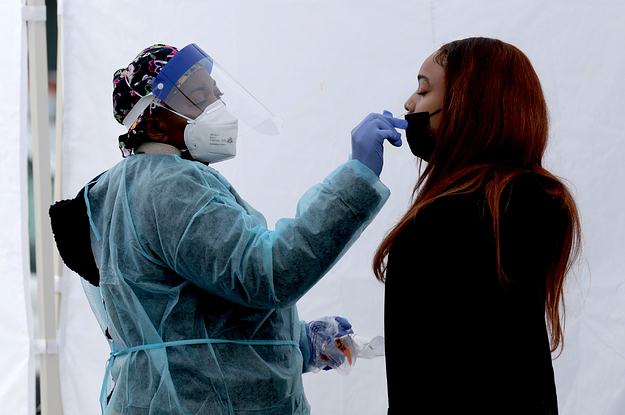On the quiet Monday after the Christmas weekend, the CDC took many people by surprise — experts included — by releasing updated guidance for how long people with COVID-19 should isolate themselves.
The new guidance halves the number of days that people should self-isolate after testing positive from 10 to five, followed by an additional five days of wearing a mask when around others.
Crucially, the shorter isolation period only applies to people who are asymptomatic, meaning they are not exhibiting any COVID symptoms, such as a cough, fever, or fatigue. People who are still feeling sick, especially with a fever, should continue to isolate themselves.
Guidance also changed for people who have been exposed to someone with COVID. Now, in a signal that our understanding of “fully vaccinated” may be changing, only people who have had their booster shot can go without quarantining. A five-day quarantine, followed by another five days of mask use, is recommended following exposure for anyone else: people who are unvaccinated, who got an mRNA vaccine dose more than six months ago without a booster, or who got the Johnson & Johnson vaccine more than two months ago without a booster.
“I was not aware they were going to do that,” Georges Benjamin, executive director of the American Public Health Association (APHA), told BuzzFeed News on Tuesday. “But the essence of what they said is that as we get the science better, we have a better sense, even with Omicron, of what the exposure risks are.”
Amesh Adalja, an infectious diseases physician and senior scholar at the Johns Hopkins Center for Health Security, also welcomed the changes.
“It’s been clear for some time that a one-size-fits-all period for isolation did not fit the period of contagiousness,” Adalja said. “The updated guidance reflects the fact that this is going to be an endemic virus and the disruption of a case can be safely minimized based on the enhanced scientific understanding that has accumulated.”
The CDC stressed its new advice was “motivated by science” that demonstrates most transmission of the novel coronavirus occurs within the first few days before symptoms appear and then over the next two to three days.
The recommendations “balance what we know about the spread of the virus and the protection provided by vaccination and booster doses,” agency director Rochelle Walensky said. “These updates ensure people can safely continue their daily lives.”

